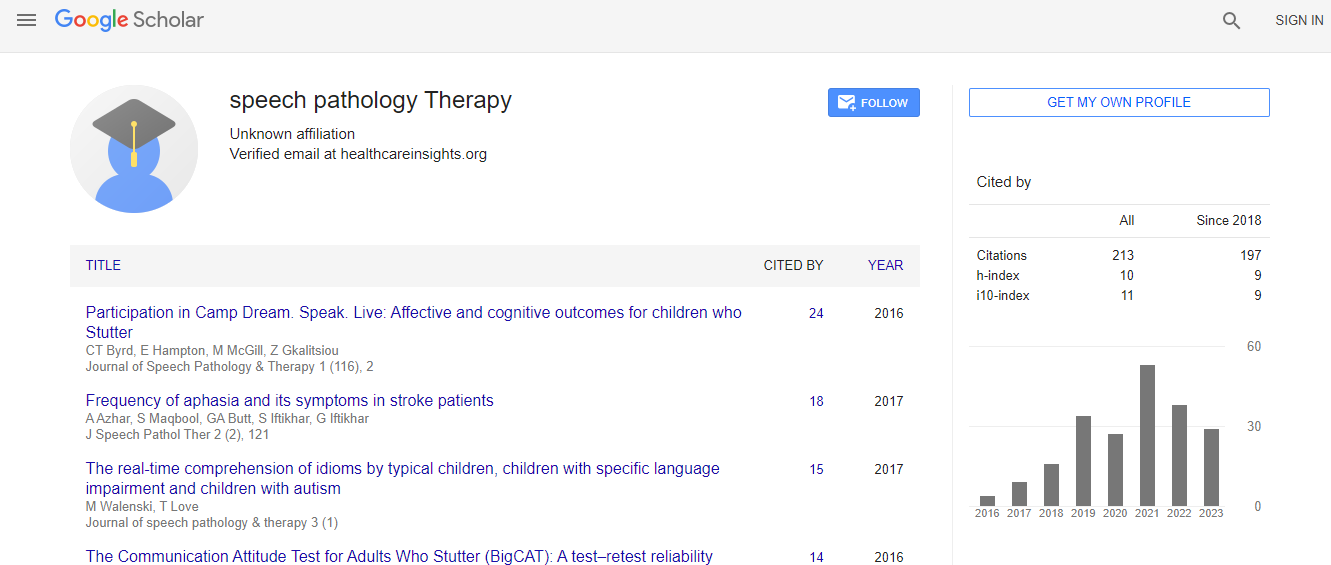Research Article
Opening and Closing Jaw Movements of Young Children who Stutter
Anthony P Buhr1*, Patricia Zebrowksi1, Jerald Moon1, Victoria Tumanova1, Richard Arenas1 and Torrey Loucks21Department of Communication Sciences and Disorders, University of Iowa, USA
2Department of Speech and Hearing Science, University of Illinois, USA
- *Corresponding Author:
- Anthony P Buhr
Department of Communication Sciences and Disorders
Speech and Hearing Center
University of Iowa, USA
Tel: 205-348-7131
E-mail: Anthony.buhr@ua.edu
Received date: May 02, 2016; Accepted date: June 28, 2016; Published date: July 06, 2015
Citation: Buhr AP, Zebrowksi P, Moon J, Tumanova R, Richard Arenas R, et al. (2016) Opening and Closing Jaw Movements of Young Children who Stutter. J Speech Pathol Ther 1:115. doi: 10.4172/2472-5005.1000115
Copyright: © 2016 Buhr AP, et al. This is an open-access article distributed under the terms of the Creative Commons Attribution License, which permits unrestricted use, distribution, and reproduction in any medium, provided the original author and source are credited.
Abstract
Objective: In this longitudinal study, we investigated the hypothesis that kinematic measures of jaw movement produced by children who stuttered (CWS) and children who did not stutter (CWNS) would differ between opening and closing speech gestures, across phonetic contexts, and across development.
Methods: Mean amplitude, velocity, and duration of jaw opening and closing gestures during repeated productions of bilabial syllables were analyzed longitudinally at 1-year intervals for 13 CWS and 7 children CWNS. The utterances ranged across four phonetic contexts: single-syllable, two-syllable, three-syllable, and six-syllable. For jaw movement transduction, a strain gauge was attached to a football helmet in a novel design to minimize head movement. All kinematic measures were made from jaw movement tracings in Windaq (Dataq Instruments, Inc.) software, based on a standard millimeter to voltage conversion.
Results: The main finding of the study was that opening gestures were produced by both CWS and CWNS with greater amplitude and duration compared to closing gestures. However, the kinematics associated with opening and closing jaw movements did not differ between CWS and CWNS, suggesting that the intrinsic articulatory dynamics of the two groups were similar. In addition, adapting the kinematics of opening and closing jaw movements across the four phonetic contexts did not differ between the groups for either movement amplitude or velocity. However, CWS produced the closing gesture with significantly greater duration compared to multi-syllable conditions, relative to CWNS. Finally, CWS and CWNS exhibited different longitudinal patterns for jaw amplitude and peak velocity.
Conclusion: The speech motor systems of CWS and CWNS exhibited broadly similar organization of intrinsic articulatory dynamics, but groups may differ in how underlying dynamics are adapted to changing phonetic contexts across development. It is possible that the speech fluency of CWS might benefit from greater articulatory constraints, as the main between-group difference was identified when degrees of freedom of movement were greatest. Implications of findings are discussed within the development of a hierarchically organized speech motor system.
 Spanish
Spanish  Chinese
Chinese  Russian
Russian  German
German  French
French  Japanese
Japanese  Portuguese
Portuguese  Hindi
Hindi 